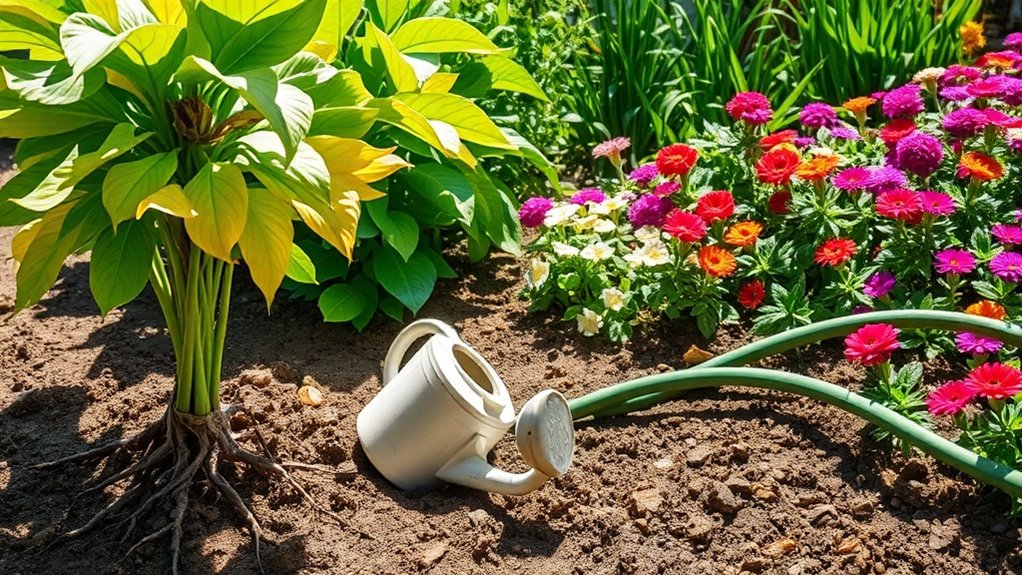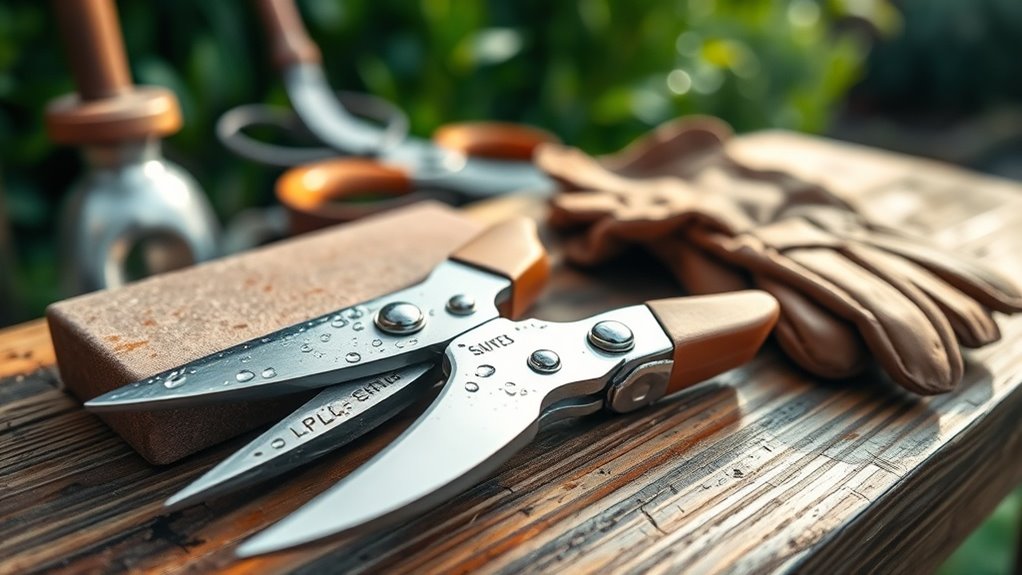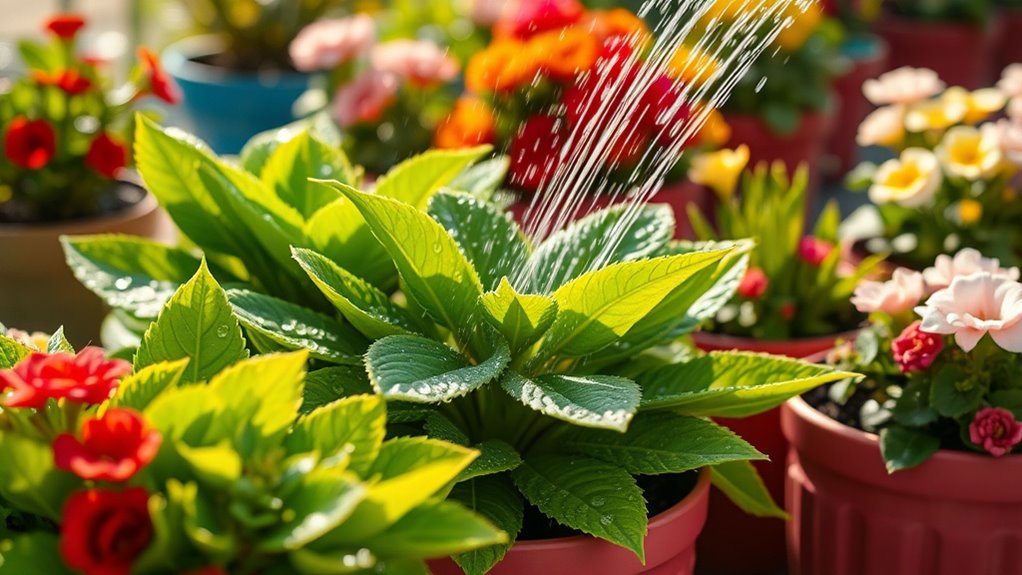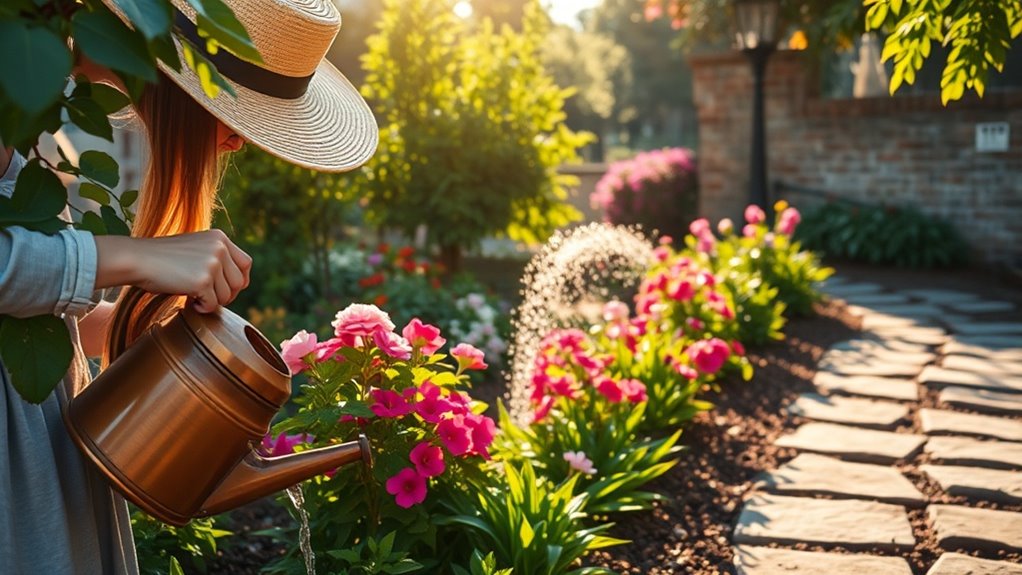Common Watering Mistakes Every Gardener Should Avoid
Watering might seem as simple as filling a can and pouring, but the reality is far more complex. Many gardeners unknowingly commit critical mistakes that can jeopardize their plants’ health. Overwatering, underwatering, and incorrect timing all play significant roles in a plant’s survival. Understanding these pitfalls is essential to fostering a thriving garden environment. So, what are the common watering errors you should be on the lookout for?
Overwatering and Its Consequences
While you might think more water means healthier plants, overwatering can lead to a host of problems.
This common watering mistake can suffocate roots, impede oxygen absorption, and promote diseases like root rot.
You should monitor soil moisture and adjust your watering habits accordingly.
Recognizing the signs of overwatering is crucial for maintaining the health of your garden and ensuring optimal growth. Additionally, it’s important to understand that proper hydration techniques can significantly reduce the risk of overwatering.
Underwatering: Signs and Solutions
Overwatering can obscure another serious issue in gardening: underwatering. Look for signs like wilting leaves, soil pulling away from pots, and dry, brown edges on foliage.
To remedy this, increase your watering frequency, ensuring deep saturation without waterlogging. Use mulch to retain moisture and check soil moisture levels regularly. Establishing a consistent watering schedule during the best times of day is crucial for your plants’ health.
Establish a consistent watering schedule tailored to your plants’ needs for optimal growth.
Watering at the Wrong Time of Day
Watering at the wrong time of day can significantly impact your plants’ health and vitality.
Early morning is ideal, as it allows moisture to penetrate before the heat evaporates it.
Watering during the hottest part of the day can cause rapid evaporation, wasting water and leaving roots dry.
Evening watering may promote fungal diseases due to prolonged moisture on foliage.
Timing is crucial for optimal growth.
Neglecting Soil Type and Drainage
Understanding your garden’s soil type and drainage capabilities is crucial for successful watering practices. Different soils absorb and retain moisture differently; sandy soils drain quickly, while clay soils retain water. If you neglect these factors, you risk overwatering or underwatering, leading to plant stress or disease. Assess your soil and adjust your watering schedule to ensure optimal moisture levels for your plants’ health. Additionally, recognizing the ideal watering schedule for your specific plants can further enhance their growth and resilience.
Ignoring Plant Watering Needs
When you overlook the specific watering needs of your plants, you can inadvertently jeopardize their health and overall growth.
Each plant species has distinct requirements that must be met:
- Consider plant size and maturity
- Assess seasonal changes in water needs
- Monitor environmental conditions (temperature, humidity)
- Identify root depth and spread
- Adjust watering frequency accordingly
Paying attention to these factors will ensure robust plant development. Additionally, be on the lookout for signs of overwatering like yellowing leaves and root rot, as these can indicate that adjustments are needed in your watering routine.
Using the Wrong Watering Technique
For instance, applying water too forcefully can cause soil erosion, while drip watering may not reach deeper roots. Instead, use a gentle spray or a soaker hose to ensure even distribution. Always target the base of the plant to maximize absorption and minimize waste. Additionally, incorporating water-saving techniques can enhance your garden’s resilience while promoting efficient water use.





